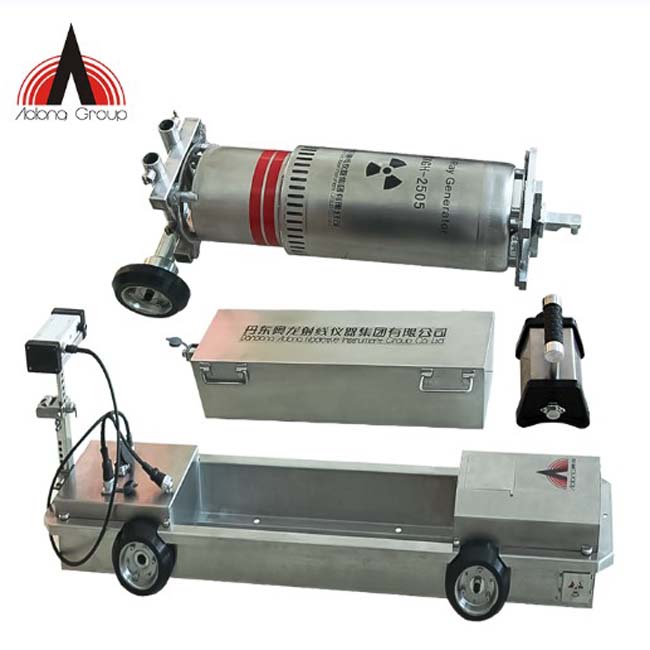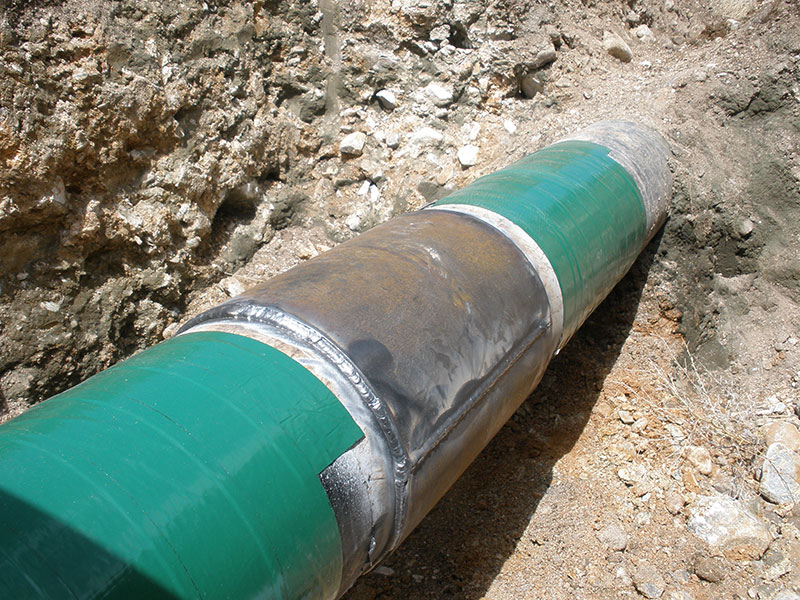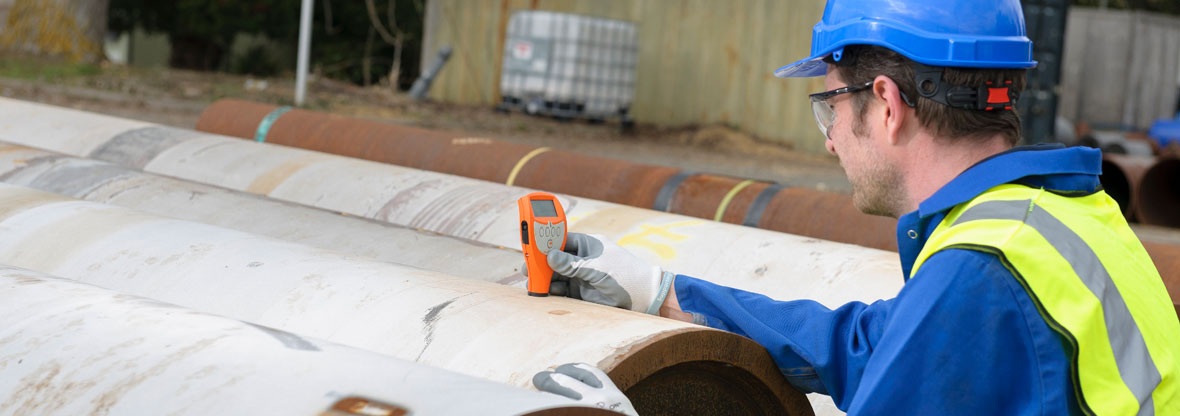
Ideal Practices for Pipeline Welding Examination: Techniques, Specifications, and Procedures to Accomplish Quality Control and Compliance
Reliable pipeline welding evaluation is crucial for guaranteeing the honesty and safety and security of crucial framework. By using a combination of methods such as aesthetic inspection and progressed non-destructive screening methods, along with adherence to developed industry standards like those from ASME and AWS, organizations can dramatically enhance their quality control processes. Nonetheless, the execution of these finest methods presents numerous challenges that warrant cautious consideration. Recognizing the intricacies associated with each phase of examination is important to attaining compliance and integrity in pipe systems. What specific strategies can be used to browse these obstacles properly?
Significance of Welding Evaluation
The stability of welded joints is critical in making sure the safety and security and dependability of pipe systems. Correct welding methods and detailed examination procedures are important to stop failures that can bring about disastrous incidents, ecological damage, and loss of life. Pipeline Welding Inspection. Welding inspection acts as a preventive step, identifying problems such as splits, porosity, and incomplete combination prior to they rise into serious concerns
Furthermore, pipeline systems often operate under high pressure and extreme problems, making the quality of welds a lot more vital. Regulative conformity is an additional significant facet, as different criteria dictate the quality control processes that need to be abided by in pipeline building and upkeep. Failing to conform can result in legal ramifications and economic losses.

The role of welding evaluation extends past simple confirmation of workmanship; it incorporates the assurance of long-lasting functional integrity. This includes a systematic method that includes not just aesthetic examinations but likewise progressed non-destructive screening techniques. Eventually, efficient welding inspection is an investment in the long life and safety and security of pipe systems, ensuring they function as intended while lessening threats related to product deficiencies.
Secret Evaluation Techniques

Aesthetic assessment, often the very first line of protection, permits the recognition of surface area issues such as splits, undercuts, and porosity. Ultrasonic testing uses high-frequency acoustic waves to spot inner defects, using a thorough assessment of weld honesty. This non-destructive technique is specifically efficient for identifying stoppages that may not be noticeable on the surface area.
Radiographic screening entails making use of X-rays or gamma rays to produce photos of the welded joint, revealing internal defects. This method offers detailed insights however might call for customized devices and safety factors to consider. Lastly, magnetic bit screening is effective for spotting surface area and near-surface suspensions in ferromagnetic materials, using magnetic areas and great iron bits.
Sector Standards and Laws
Compliance with sector standards and guidelines is essential for making sure the top quality and safety of pipeline welding inspections. These requirements provide a structure for best methods in welding processes, products, and inspection techniques, enabling read this post here companies to minimize flaws and enhance the honesty of pipeline systems. Secret bodies such as the American Culture of Mechanical Designers (ASME), the American Welding Society (AWS), and the International Company for Standardization (ISO) state standards that are widely recognized and taken on within the market.
In the USA, laws from the Pipeline and Hazardous Materials Security Management (PHMSA) govern the safety of pipeline operations, mandating rigorous inspection protocols. These requirements not just serve to protect public safety and security and the environment yet also make certain compliance with legal and legal responsibilities. Adherence to the pertinent codes, such as ASME B31.3 for process piping, is crucial for maintaining functional efficiency and regulative conformity.
Additionally, constant updates and revisions to these standards reflect technological advancements and evolving market practices, emphasizing the demand for organizations to remain informed and train employees accordingly. Ultimately, durable conformity with well established standards promotes count on and dependability in pipeline infrastructure, safeguarding both possessions and stakeholders.
Efficient Examination Treatments
Effective examination procedures are essential for determining potential defects in pipe welds and guaranteeing the general integrity of the system. A methodical approach to examination incorporates numerous vital stages, consisting of pre-weld, in-process, and post-weld evaluations. Each stage plays an important role in keeping high quality guarantee.
During pre-weld assessment, it is necessary to examine the products and joint setups, guaranteeing compliance with job specs. In-process evaluations include keeping an eye on welding techniques and parameters, such as warmth input and take a trip speed, to prevent issues from occurring. This stage permits real-time modifications to welding techniques.
Post-weld inspections consist of non-destructive screening (NDT) methods like radiography, ultrasonic testing, and magnetic particle testing. These approaches assist find inner and surface area problems that can endanger the pipe's functionality. Paperwork continue reading this of all assessment activities is vital, offering a deducible record that supports compliance with industry criteria.
Training and qualification of examination personnel better improve the efficiency of these procedures. By adhering to an organized evaluation procedure, companies can reduce threats, ensure conformity, and ultimately provide pipes that meet strict security and performance needs.
Typical Obstacles and Solutions
Pipeline welding examination provides numerous usual difficulties that can influence the top quality and security of the last item. One substantial challenge is the variability in welding techniques and products, which can lead to irregular weld high quality. To resolve this, it is important to develop standardized procedures and training for welders, making certain a consistent strategy throughout tasks.

Ecological variables, consisting of temperature level and moisture, can additionally impact the welding procedure, possibly bring about cracks or incomplete fusion. Executing controlled settings and sticking to pre-weld treatments can mitigate these dangers.
Verdict
Finally, the implementation of ideal techniques for pipe welding assessment is crucial for ensuring high quality guarantee and compliance with market standards. A thorough strategy, incorporating numerous techniques such as aesthetic, ultrasonic, and radiographic screening, facilitates the recognition of issues throughout all stages of the welding procedure. Pipeline Welding Inspection. Adherence to established policies and effective examination treatments not just enhances the integrity and security of pipe systems but likewise mitigates risks related to welding problems, thus promoting general operational integrity
Conformity with industry requirements and policies is important for guaranteeing the quality and safety of pipeline welding examinations. These requirements give a framework for best techniques in welding procedures, products, and inspection strategies, allowing organizations to reduce defects and improve the integrity of pipe systems.In the United States, policies from the Pipe and Hazardous Materials Safety Management (PHMSA) control the safety and security of pipe operations, mandating extensive inspection protocols. A systematic approach to examination includes several vital phases, consisting of pre-weld, in-process, and post-weld inspections.In conclusion, the application of finest techniques for pipeline welding assessment hop over to these guys is necessary for ensuring top quality guarantee and compliance with industry criteria.